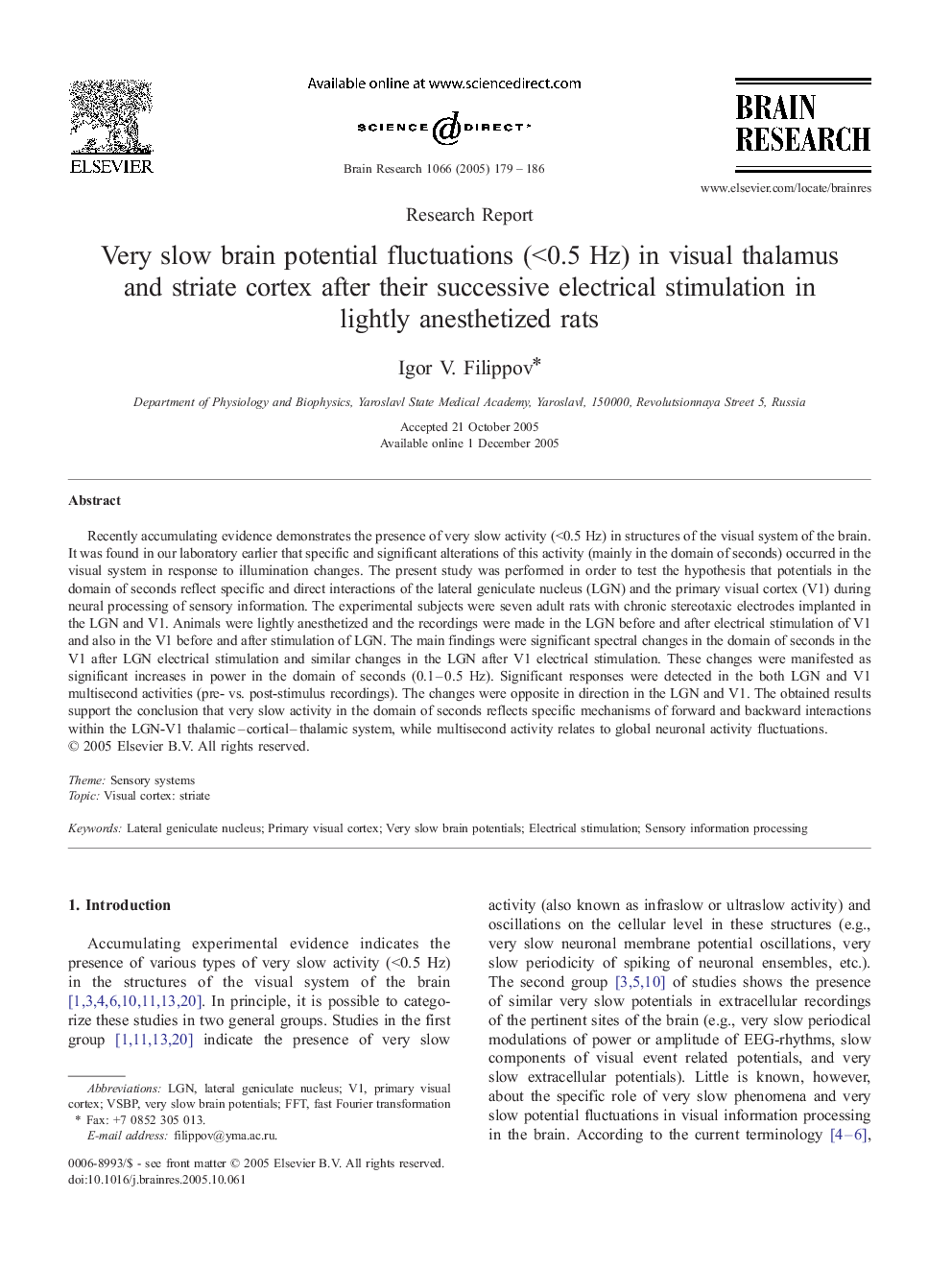| Article ID | Journal | Published Year | Pages | File Type |
|---|---|---|---|---|
| 9415733 | Brain Research | 2005 | 8 Pages |
Abstract
Recently accumulating evidence demonstrates the presence of very slow activity (<Â 0.5 Hz) in structures of the visual system of the brain. It was found in our laboratory earlier that specific and significant alterations of this activity (mainly in the domain of seconds) occurred in the visual system in response to illumination changes. The present study was performed in order to test the hypothesis that potentials in the domain of seconds reflect specific and direct interactions of the lateral geniculate nucleus (LGN) and the primary visual cortex (V1) during neural processing of sensory information. The experimental subjects were seven adult rats with chronic stereotaxic electrodes implanted in the LGN and V1. Animals were lightly anesthetized and the recordings were made in the LGN before and after electrical stimulation of V1 and also in the V1 before and after stimulation of LGN. The main findings were significant spectral changes in the domain of seconds in the V1 after LGN electrical stimulation and similar changes in the LGN after V1 electrical stimulation. These changes were manifested as significant increases in power in the domain of seconds (0.1-0.5 Hz). Significant responses were detected in the both LGN and V1 multisecond activities (pre- vs. post-stimulus recordings). The changes were opposite in direction in the LGN and V1. The obtained results support the conclusion that very slow activity in the domain of seconds reflects specific mechanisms of forward and backward interactions within the LGN-V1 thalamic-cortical-thalamic system, while multisecond activity relates to global neuronal activity fluctuations.
Keywords
Related Topics
Life Sciences
Neuroscience
Neuroscience (General)
Authors
Igor V. Filippov,
